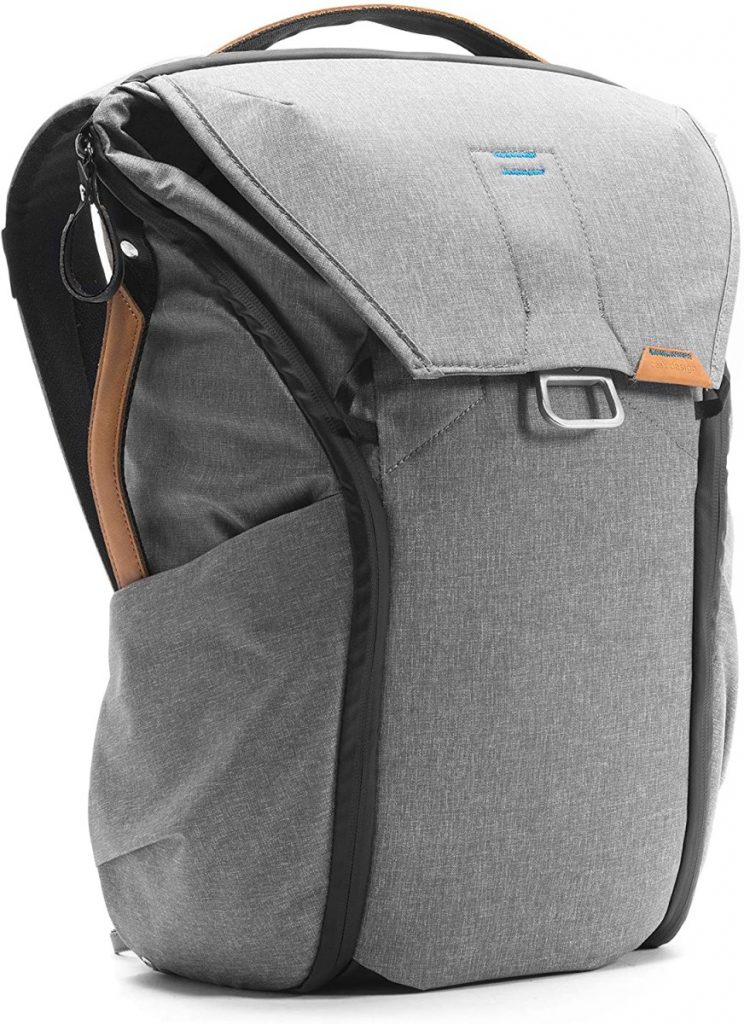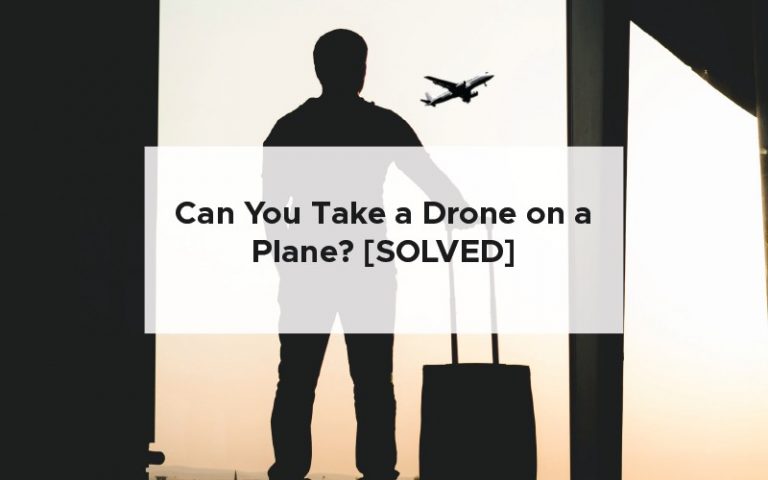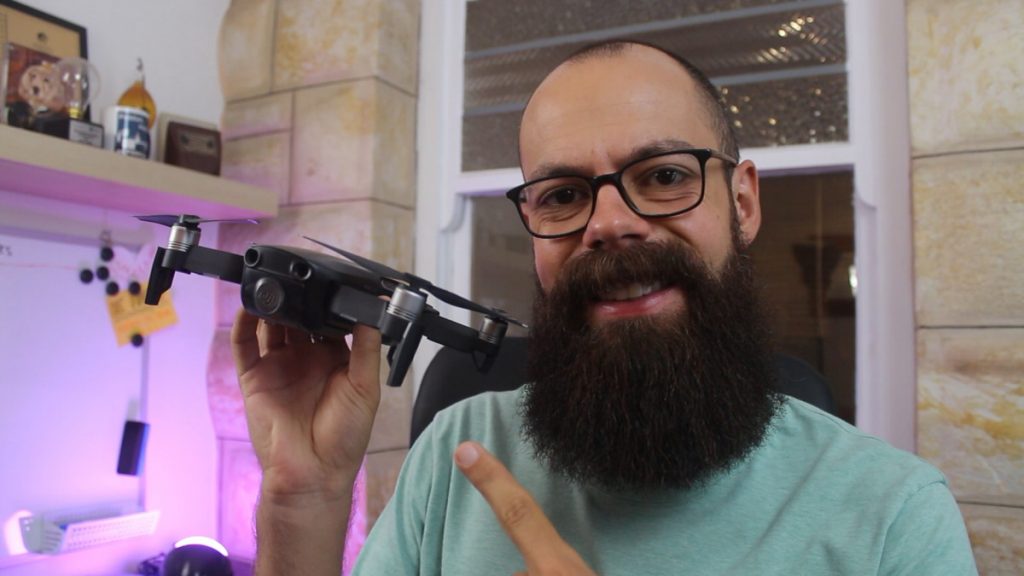One of the best things about owning a drone is all of the awesome ways in which you can capture your travels. I have taken my drone all over Australia and have captured some amazing footage of us doing very simple walks or drives. The question is can you take a drone on a plane? Travelling with a drone can be hard because each airline has different rules and regulations. It essentially comes down to how big the drone is and how much energy the battery store which determines whether or not you are able to take your drone on a plane.
Yes, you can take a drone on a plane. It is normal for airlines to ask that the lithium polymer batteries be taken on the carry-on luggage and if your drone is particularly large that it gets checked in.
You need to check each individual carrier to find out their exact rules and travelling internationally requires a little bit more understanding of the destinations drone rules and regulations.
In this article, we are going to discuss some of the common rules and regulations which dictate whether or not you are able to take your drone on your next adventure. Taking your drone on a plane opens a whole world of opportunity and the ability to capture those life-defining trips and moments. It would be a shame not to be able to take it so let’s do a little bit of research…
Can a drone go through airport security?
Yes, drones are able to get through airline security. In the United States of America the TSA’s policy for travelling drones is that drones are allowed through the checkpoints but travellers should check with their airline for their specific policy.
Your drone should be placed in a bag which allows it to be easily accessed if they want to take a look. You should always approach the security checkpoint with a level of professionalism and friendliness because the final decision of whether or not your drone is allowed through the checkpoint rests with the security officer. This means that if the security officer just doesn’t like you all that you haven’t been as cooperative as they would have liked your drone may be stuck on the nonsecure side of the airport.
Here is a YouTube video which shows the process of travelling through airport security with a drone:
If you are having any issues with the security agent you could always ask for a second opinion and show that the lithium polymer batteries are secured safely and that your drone does not present any risks for travellers or the airline on which you are travelling.
If you are flying with a particularly large drone, for example the inspire DJI drone, or you are carrying a significant number of batteries or other electronic items you should contact the airline well before your flight and ask if there are any special considerations you need to make. Having this information readily available to the airport security staff will help them understand that the airline is okay with your specific circumstances.
At all times remain polite and courteous. If you don’t get the answer you want remember that there are always other options for example shipping your drone or trying again with a different security officer maybe after a shift change.
Are drones allowed in carry on luggage?
Broadly speaking, drones are allowed in your carry on luggage as long as they fit within the typical constraints that airlines place on carry on luggage. The airline’s primary concern is the lithium polymer battery as if they are mishandled they can become dangerous. An uncontrollable fire at altitude is a disaster for an airline.
Some airlines allow you to carry a drone with a battery inserted but you need to follow specific principles to make sure that your drone is not likely to turn on during the flight. Most drones have a multi-push turn on sequence of this is very unlikely to happen during flight but leaving the battery out of the drone may be the best option.
Any spare or loose lithium polymer batteries must always be transported in your luggage and never checked in. You can purchase simple battery protectors if you are travelling regularly which means that they are protected not only from short-circuits but also from the wear and tear that they may pick up while travelling.
Watt hour limit
The number of batteries isn’t as important as the amount of power that they can store. Airlines care more about the lithium batteries than they do about the electronic components in your drone. Let’s take a look at the rules surrounding different batteries and typically if it is under 100 Watt hours it is fine.
Anything over 160 Watt hours must be checked in with a specialised freight aircraft. It is not very common that a consumer level drone has anything as big as this as even the phantom series has a Watt hours of about 68. So, you’re going to have to be packing some serious drone power to get anywhere near hundred and 60 Watt hours.
Can I bring lithium polymer batteries on a plane?
Lithium polymer batteries are fine to take on a plane as long as they fall within the rules around the number of Watt hours that the battery holds.
Some of the DJI drones have the Watt hours printed on the side of the battery whilst others you need to do a simple calculation to work out the exact amount of Watt hours that that battery holds.
Calculate the Watt hours
Calculating the Watt hours of your battery is quite simple. All you have to do is multiply the Volts by the amp hours to get the Watt hours of your drone battery.
Here is a table of the Watt hours of some commonly available drones:
| Drone | Voltage (v) | Current Hours (mAh) | W hr (Calculated) |
| Mavic Air 2 | 11.55 | 3500 | 40.425 |
| Mavic Mini 2 | 7.7 | 2250 | 17.325 |
| Mavic Air | 11.55 | 2375 | 27.43125 |
| Phantom Pro | 15.2 | 5870 | 89.224 |
| Inspire 2 | 22.8 | 4280 | 97.584 |
| Parrot Anafi | 7.6 | 2700 | 20.52 |
| Autel Evo 2 | 11.55 | 7100 | 82.005 |
Here are some of the rules which relates to the size of the battery and the sorts of things you can cannot do with each drone on the airline.
100Wh or less
At 100 Watt hours or less your lithium polymer batteries should be taken on your carry on luggage. If you only have one battery it should be stored in your drone and any extra batteries you have should be protected from short-circuiting and the terminals completely insulated.
100 – 160 Wh
most airlines require approval if you are thinking about carrying a battery with over 100 Watt hours. It is recommended that you contact your airline prior to travel as some of them only allow one or two spare batteries permitted per passenger as long as they are properly packaged in carry on baggage. If passengers want to carry more than two spare batteries which are rated between 100 – 160 Watt hours they must be consigned as cargo.
160 +
Anything greater than 160 Watt hours should be professionally couriered to its location. Fortunately there are no consumer level drones which have anything as big as this.
Now, let’s take a quick look at how you pack drones and lithium polymer batteries for air travel so that your drone is protected, you get on the flight, and you can be assured that your drone won’t cause any major airline incidents.
How do you pack a drone for air travel?
Packing a drone for air travel is the same as packing your drone for any trip in regards to protecting the drone. However, because there are some specific rules and regulations which airlines want you to uphold you have to be extra careful and specific while packing your drone.
Turn off
Firstly, it goes without saying that you should turn off your drone. Your drone should be completely powered down and this includes the remote control and any other third party electronic components you have installed.
Protect from accidental activation
You should protect your drone from accidental activation by ensuring that there are no hard objects up against the battery button or switch. Luckily, a lot of modern-day drones have a multi-press and multistage turn on procedure. For example the DJI Mavic air requires a single press followed by a long press. This means that random movement in your bank’s arm likely to activate your drone.
However, for extra security you can make sure that there are only soft things against the button. I like to pack a jumper or a simple bit of scrap material (or underwear) around any bottoms that may be pushed on the remote control all the drone itself.
Any spare batteries should also have their switch is protected with soft items or a hardcover around the switch. Some batteries allow you to check the charge by simply pressing once and you wouldn’t want this to go off too often in your bag and increase the risk of something going wrong.
Remove the blades
When you travel with your drone you should remove the blades and propellers and store them separately in their own secure your spot. Some drone cases (like the DJI Mavic air) come with a soft or semihard case which allows you to carry the drone while it has is propellers attached. Because of the increased amount of movement and potential rubbing up against the side of the case I would remove the propellers completely and store them separately.
The propellers are the most important thing that keeps your drone in the air. Any small micro cracks or stresses or warps or bends that occurred during transport can have a significant impact on the stability and safety of your flying mission.
I also like to carry with me at least one full set of drone blades separately to the drone and other accessories which enable me to quickly get back in the air if the damage has been caused during transit.
Protect with padding
You should consider investing in a good quality drone backpack. A good quality drone pack will enable you to travel with easels also having your drone with you at all time and knowing it is protected.
If you want a full run down on the best drone backpack for your travels check out my other, massive, article which talks you through a ton of options for the best drone backpack – the ultimate guide – click here to be taken to article.
My pick for drone backpack:
Peak Design Everyday Backpack (20L)

I absolutely have not regretted this purchase for carrying my drone and other camera gear. I have travelled all around Europe with this bag and this is why I love it:
- 20L is a perfect size – I thought that I would regret getting the smaller version of this bag but it really has helped me decide what I need to take on a shoot and also makes sure that I don’t have a sore back at the end of the day.
- It has so many pockets – a LOAD of pockets. I carry everything from spare batteries, memory cards, pens, pocket knives and I’ve still got pockets to spare. The array of different sizes are also amazingly suited to everything that I want to carry. They really did think of everything!
- It has a dedicated laptop space – Everywhere I go I carry my MSI 13-inch gaming laptop. I use it for editing, motion graphics, and admin. Having a dedicated soft space of it makes it easy to travel with and whipping it out quickly to do some work is perfect. It also has a small slot of a tablet in the same area – I use it to carry my e-reader! If you have a larger laptop you 100% need the next size bag up.
- The versatility of straps and dividers – I’ve trialled about 50 different divider orientations so that I could find the perfect space designation as my gear grows. You can also strap stuff on the sides and front of the bag – which I’ve used for jackets and roll mats. If it doesn’t fit in the bag – it’ll be secure on the outside of the bag.
- Straps on the outside – I absolutely love the fact that if I can’t carry everything inside my backpack that I can in fact strap it to the outside with ease. This bag comes with straps for holdings underneath the back I have used to carry a wet coat when I didn’t want to put it in my bag as well as a rolled up Matt for sitting on the floor while I was picnicking. I just love this bag!
- It keeps my gear safe – being able to divide the bag into perfectly sized compartments gives me a load of confidence that my expensive gear is safe! I can never hear things banging together and the soft interior helps too!
- Loads of accessories – need clips and other pouches- this bag has so many more things you can buy and it all works incredibly well together.
- Amazing warranty – I bought one because my friend bought one. His zipper broke – they sent him a brand new bag even before he’d been able to send off his old one! I also emailed asking a couple of questions about warranty of second-hand bags and as long as it is a peak design original – they’ll sort out your issues!
- It looks good – to me this is one of the least important factors but a factor nonetheless. Other camera bags look like a military bag and it LOOKs like it has a camera or drone in it. This simply doesn’t. I’ve also used this as my everyday carry with no camera or drone and it doesn’t look out of place in the slightest.
Of course there are plenty of other options but this is my favourite!
Protect the batteries
Like we discussed above, the airlines are more concerned about the batteries than the drone. So you should protect your drone from extreme heat by carrying it in your carry on luggage and also short-circuiting you can do that a number of ways:
- If you have the original packaging you can always carry the batteries in the original packaging and that will ensure that the battery is protected the best as that is exactly what the packaging is designed to do.
- Purchase a battery protection case specifically for the model of battery that you have. This will protect it from heat but also from any short-circuiting that may occur with the terminals.
- Place tape or other plastic protector over the battery connectors. Simply placing an insulator which is securely fastened to the battery between the terminals and the external world will help protect the battery from short-circuiting and coming into any metallic objects in your bag or other areas.
Preparation for air transport can also mean making sure that the drone battery is only at 30 to 50% state of charge. As this will be the safest way to transport them. Making sure that they are in good condition and that none of the plastic casing from around the battery is damaged. And also make sure that the battery is easily identifiable as a drone battery. All of these simple tips mean that your drone battery will be allowed to fly with you because you have proven that it is safe.
Final thoughts
Carrying a drone with you while flying is an incredible way to capture some of the best moments of your life. By simply following the tips in this article you will be able to transport any drone battery securely and safely with the worst-case scenario of it being couriered to your destination.
If you don’t follow the steps you run the risk of having your drone confiscated or any legal issues if your drone’s phone if you try to sneak in. Transparency is always the best option and if you want to carry your drone and you are still unsure of the rules and regulations for a specific airline I would contact the airline directly a couple of weeks before your flight to make sure that everything will be okay for you.
Good luck taking your drone with you and enjoy your holiday and trip!




